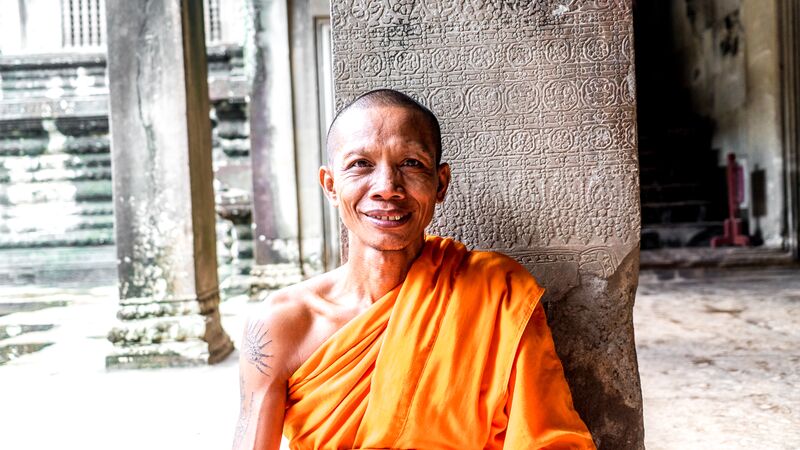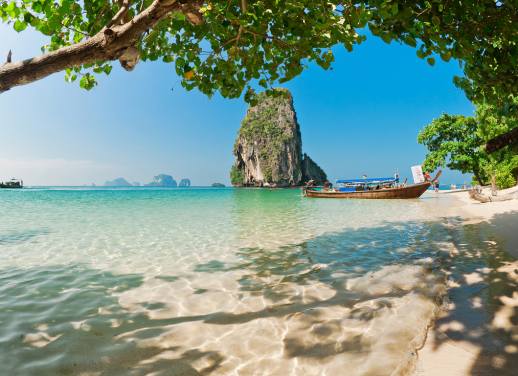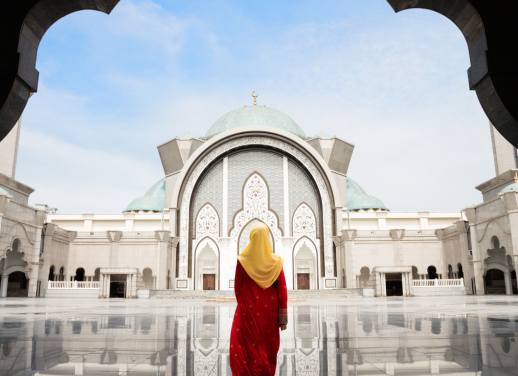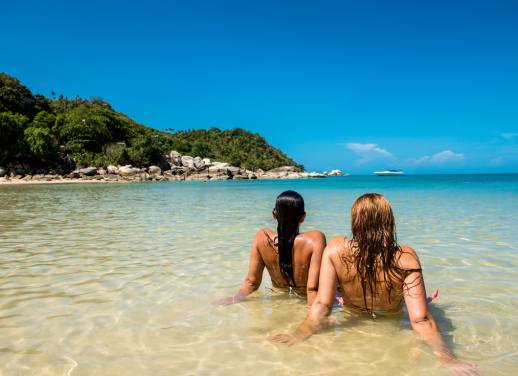So, you’ve decided on South East Asia, and you’ve narrowed it down to Cambodia and Thailand. But now you’re torn.
Both countries boast tropical year-round weather, delicious cuisines and cities that’ll keep you coming back for more. Ideally, you’d combine both countries into one trip, but if your annual leave and budget only allow one country, what will it be? We’ve broken down the top considerations to help make the decision a tad easier.
Cuisine
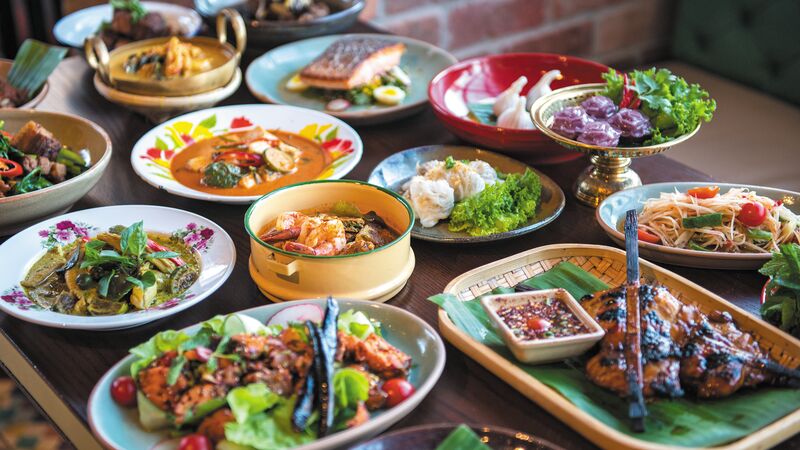
Firstly, and perhaps most importantly, let’s talk about food. There’s a reason you’ll find Thai restaurants worldwide – who can resist a peanutty pad Thai or a zesty tom yum? But Thai food is much more than the classics you know and love. Each region has different flavours and cooking styles, from khao niaow (sticky rice) and som tum (papaya salad) in the north to pla thot khamin (deep-friend turmeric fish) and khao yam (rainbow rice salad) in the south.
But what makes Thai cuisine sizzle is its street food scene. Whether you’re exploring Bangkok’s Chinatown or strolling the beachfront in Phuket, you’ll see woks of noodles being tossed in the air or vendors grilling prawns or meat skewers. Sitting on a tiny stool at a street food market is a highlight for many travellers in Thailand.
Read more: Foodie? Here’s why you should travel to Thailand
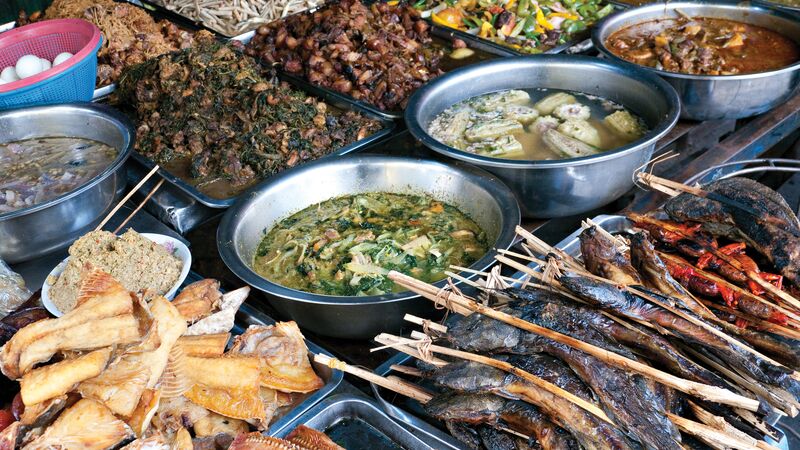
Cambodian cuisine, on the other hand, isn’t as famous, which is a big shame because it’s delicious! Unlike its South East Asian neighbours, the spiciness of Cambodian food is predominantly from pepper, not chilli, from Kampot in southern Cambodia. In fact, top chefs consider Kampot pepper to be the world’s finest.
Traditional Khmer cuisine revolves around rice, fish, prahok (a fermented fish paste) and kroeung (a fragrant curry paste). You’ll also see culinary influences from France, China, and India on the menu. Popular dishes include fish amok (coconut fish curry in banana leaf), samlor machu (sweet and sour soup), nom banh chok (Khmer noodles) and pleah sach ko (beef ceviche).
Winner: Thailand (for its lemongrass-y, galangal-y goodness)
Discover Cambodian food on a Real Food Adventure
Cities
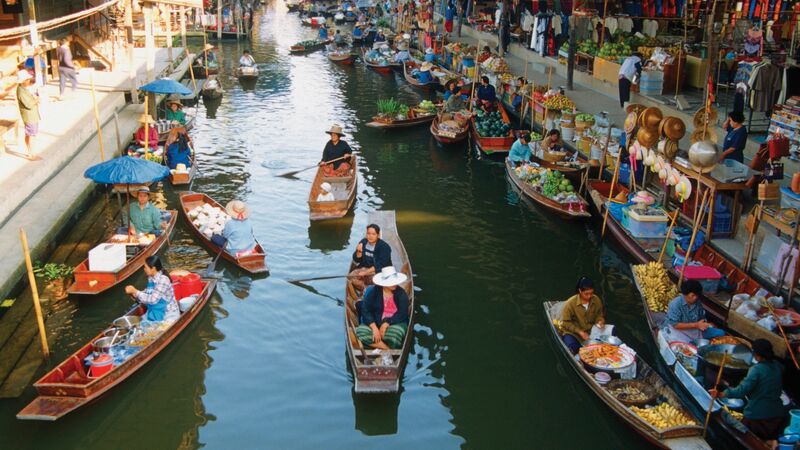
Thailand’s cities are bigger and bolder than Cambodia’s (*cough* The Hangover Part II *cough*). OK, you might not want to pull all-nighters like Phil, Stu, Alan and Doug, but the movie conveys Bangkok’s energy. There are endless things to do from zipping through the maze-like streets of Rattanakosin (Old City) in a tuk-tuk, watching a Muay Thai show or visiting a floating market to see locals whipping up all sorts of dishes from a wooden canoe.
Thailand’s second-largest city, Chiang Mai, has a much more relaxed vibe. The city is home to over 300 Buddhist temples that glisten in the sun, night bazaars and a gorgeous Old Town surrounded by a moat. It’s also the gateway to the lush Doi Inthanon National Park.
Read more: What to do, eat and drink in Bangkok
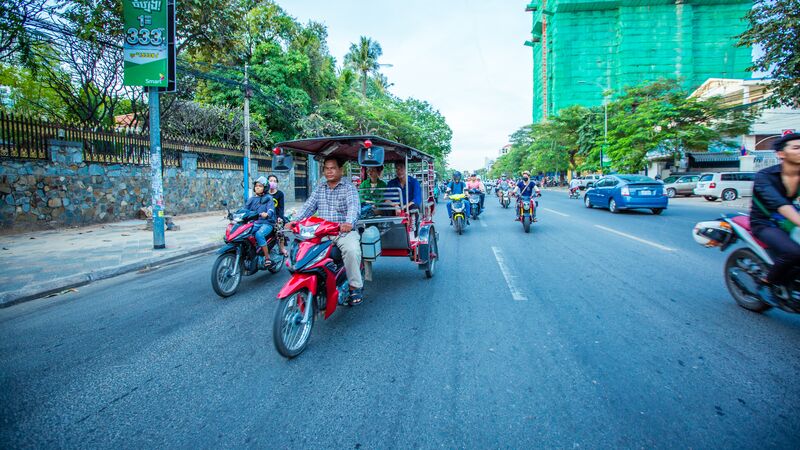
Cambodia’s capital, Phnom Penh, might be smaller than Bangkok, but it still hums with energy. The markets sell anything and everything from food to furniture, there’s a mix of old and modern architecture and the waterfront has round-the-clock activity, from locals doing morning aerobics classes to families playing games at sunset. There are fewer bars than in Bangkok, but pockets do exist – including the Bassac Quarter which comes alive after dark.
If you’re looking for a little more peace and quiet, Cambodia also has plenty of smaller cities and towns to explore. Visit Kampot to learn why its pepper is so tasty, head to the coastal town of Kep to feast on crab (seasoned with said peppercorns), or go north to Siem Reap for temple ruins, laidback cafes and floating villages.
It’s important to remember that Cambodia was a very different place several decades ago. The atrocities of the Khmer Rouge regime from 1975 to 1979 caused devastation beyond anything words can convey. The aftermath crippled the country’s development, which is why travelling to Cambodia – and learning about its tragic past and the stories of its people – is so important.
Read more: What it’s really like visiting Cambodia’s Killing Fields and S21
Winner: Thailand
Temples
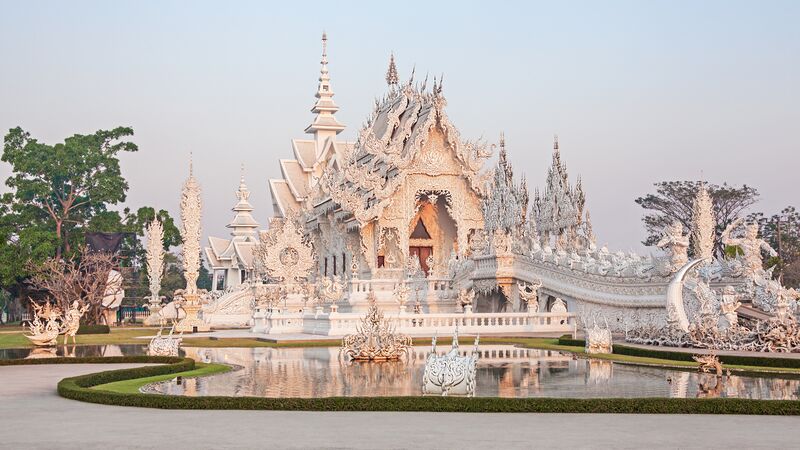
No matter where you go in South East Asia, get ready for temples galore. Buddhism prevails in Thailand and Cambodia, and rituals and worship play a significant role in daily life. Some of the most iconic temples to visit in Thailand include Wat Pha Sorn Kaew, an impressive mountaintop pagoda distinguished by five massive white Buddha statues; the fairytale-like Wat Rong Khun (White Temple) in Chiang Rai, and Bangkok’s Wat Pho featuring a 46-metre-long reclining Buddha statue.
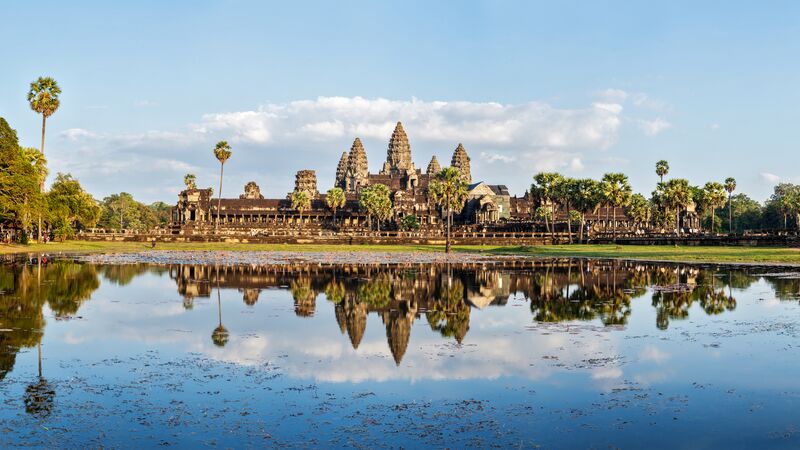
One word: Angkor. Spanning 400 acres, this historical site is one of the world’s largest archaeological sites, attracting over 2 million people yearly. Angkor was built in the early 12th century and was once a fully functioning city that historians believe had a population of up to one million. From the ancient passageways of Angkor Wat to the smiling statues of the Bayon Temple and the giant tree roots that have taken over Ta Prohm (AKA, ‘Tomb Raider temple’), exploring these ruins is like exploring another world.
Winner: Cambodia
Beaches
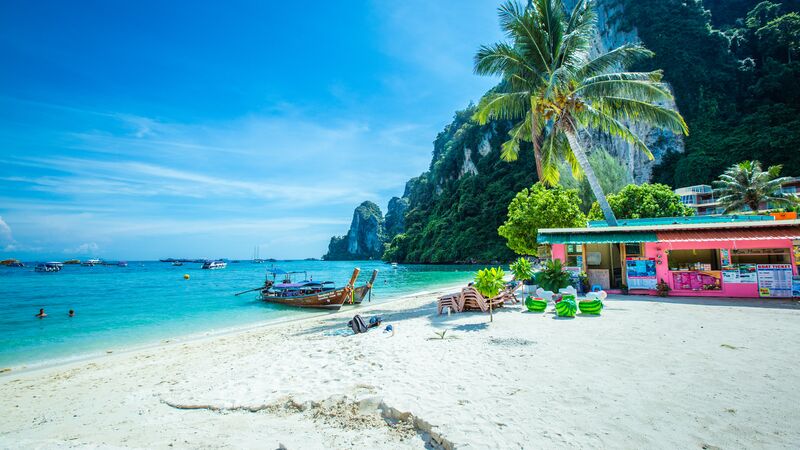
If being horizontal on white sand with a coconut (or cocktail) in hand is your idea of a good time, you’ll be pleased to know you can get your beach fill in both countries. But with over 2500 kilometres of coastline and 1400 islands – some of which have been voted the world’s best – Thailand has the upper hand. Iconic spots include Ko Hong with its turquoise lagoons and the karst-studded Railay Beach. And we can’t forget about Maya Bay, which earned star status in the cult classic, The Beach (2000) starring Leonardo DiCaprio.
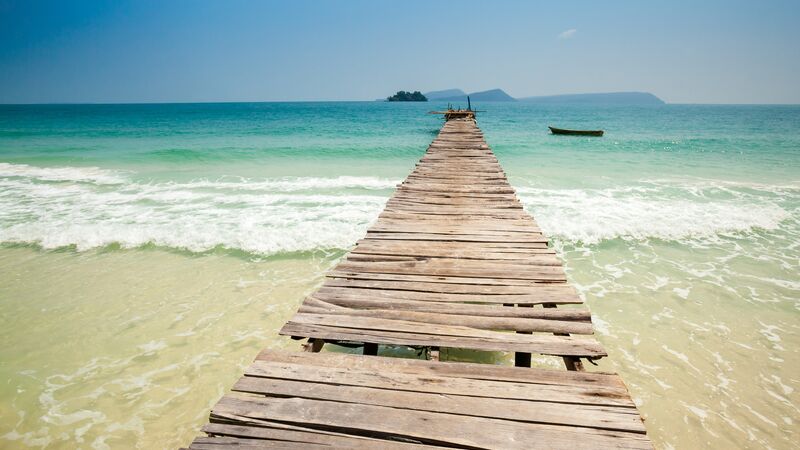
It’s hard to compete with Thailand, but Cambodia may be a better choice if you’re not keen on touristy bars. The best islands and beaches are off the south coast, including Koh Rong, Koh Rong Samloem and Koh Ta Kiev. Cambodia’s beaches feature simple accommodations (as well as a few fancier resorts) and smaller crowds cramping your style.
Winner: Thailand (but Cambodia gives it a run for its money)
Weather
Thailand and Cambodia are both year-round destinations. They have a tropical climate with a distinct wet and dry season. Average temperatures linger between a balmy 18 to 38°C in Thailand and 22 to 35°C in Cambodia. The wet season usually arrives from May to September/October, and while you can expect rain every day, it’s generally in the form of heavy, albeit brief, afternoon downpours and shouldn’t disrupt your trip. Plan your trip between November and March for dry weather.
Winner: Draw
The verdict
Thailand and Cambodia share many similarities. They both boast incredible beaches, lip-smacking food and a strong culture which locals are keen to share with you. Thailand is more developed and has more tourist infrastructure, but this might be another reason to visit Cambodia depending on what you’re looking for.
Check out Intrepid’s small group adventures in Thailand and Cambodia

